Last updated - February 2, 2022
Slow loading of website, error messages and warnings that go over our head, non-responsive buttons and pages, and exceeding the execution time. These are some of the most common problems we face on our WordPress site. Sometimes it is hard to even figure out what or where the problem is!
Since everyone is not a WordPress Wizard, you start finding a developer that can help you fix these issues. In this article, I’ll discuss some basic WordPress troubleshooting tricks that will help you detect and troubleshoot the problems, on your own.
Problems
The first step in solving any problem is understanding the problem and then finding the cause. The most common problem faced is the slow loading of websites. Is it because you installed a new plugin? or because of a plugin update? If so, the problem is solved right away. But remember, a plugin update can cause a new problem or can solve an existing problem on your site. Nevertheless, it is always a better idea to stay updated and check compatibility of your plugins with the latest versions of WordPress.
Another infuriating error is the infamous white screen of death. Confused, and trying to move to previous and following pages of your website. Is the theme or some plugin causing the issue?
If your WordPress site is integrated with WooCommerce, you might have faced Maintainance error messages. Also, your Checkout might be taking too long to load. This might have lead to crashing your website!
Enough of the problems, let us now see how you can find the cause of the problems and troubleshooting it.
Finding the cause of the problem
Should you check your theme files? or recently installed/updated plugins? How do you go about finding the cause of the problem?
Fret not, the following flow-chart will help you understand the right approach for the finding the cause of the problem.
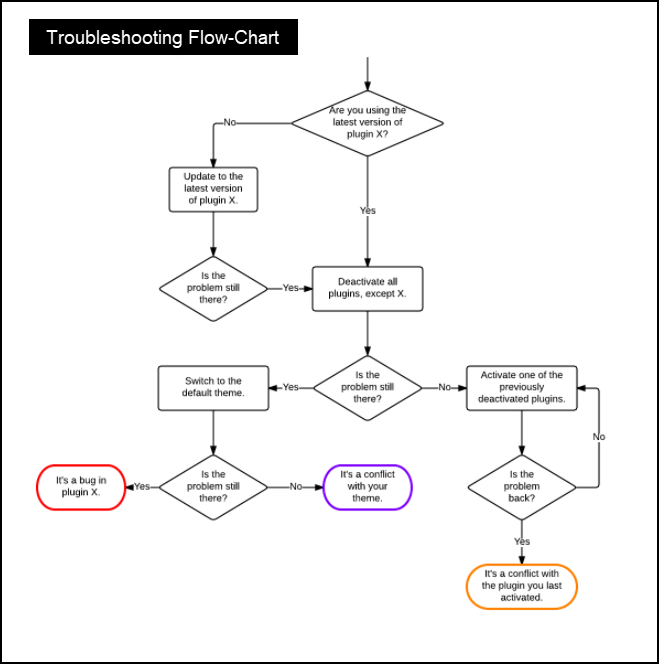

If you follow the above flow-chart process, you might end up with either of the three conclusions:
- Bug in the Plugin.
- Conflict with your website theme.
- Conflict with the last plugin you activated.
When you face the above issue(s), you can try contacting the respective plugin authors/developers for fixing it.
Troubleshooting the problems
It’s time to take the matter into your own hands.
Once you have found the cause of the problem, you can try following methods for troubleshooting your WordPress site.
I) Deactivate the plugins:
The first line of defense is to deactivate all your plugins. There are two ways in which you can deactivate the plugins –
- From WordPress Plugins dashboard: This method is viable when you are able to access the site. The process is straight-forward. On the WordPress sidebar menu, click on Plugins > Installed Plugins. Click on the Active submenu and deactivate all the activated plugins.
A sample screenshot is shown below.


2. Using phpMyAdmin: There are times when you are unable to access your site(WordPress admin dashboard). In such scenarios, you can use your database management client tool, like phpMyAdmin, to deactivate the plugins.
Here’s how you should go about it –
- Log in to your phpMyAdmin dashboard, and click on your website database name.
A sample screenshot is shown below.
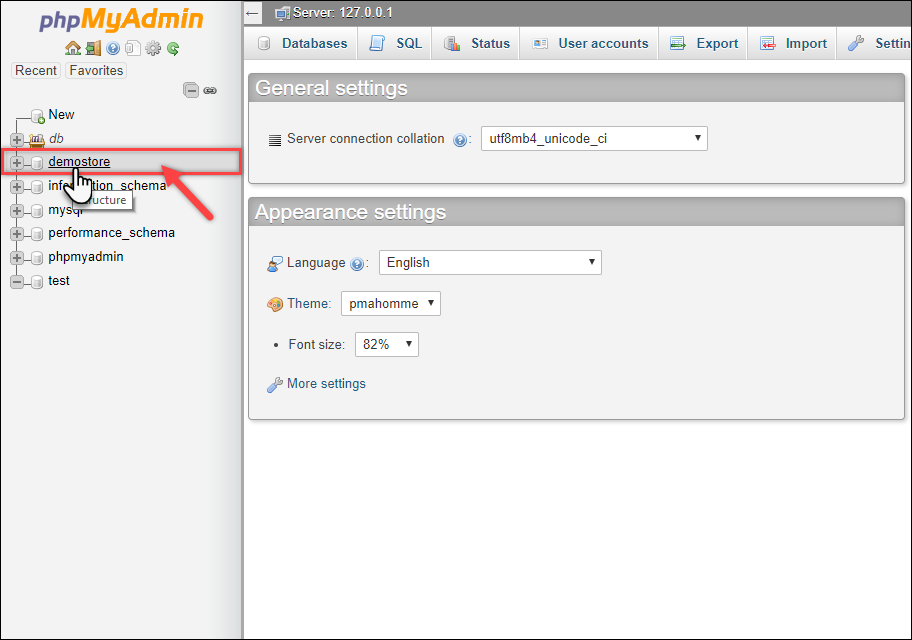

- The database tables appear prefixed with “wp_”. From the table list, click on the wp_options table as shown in the screenshot below.
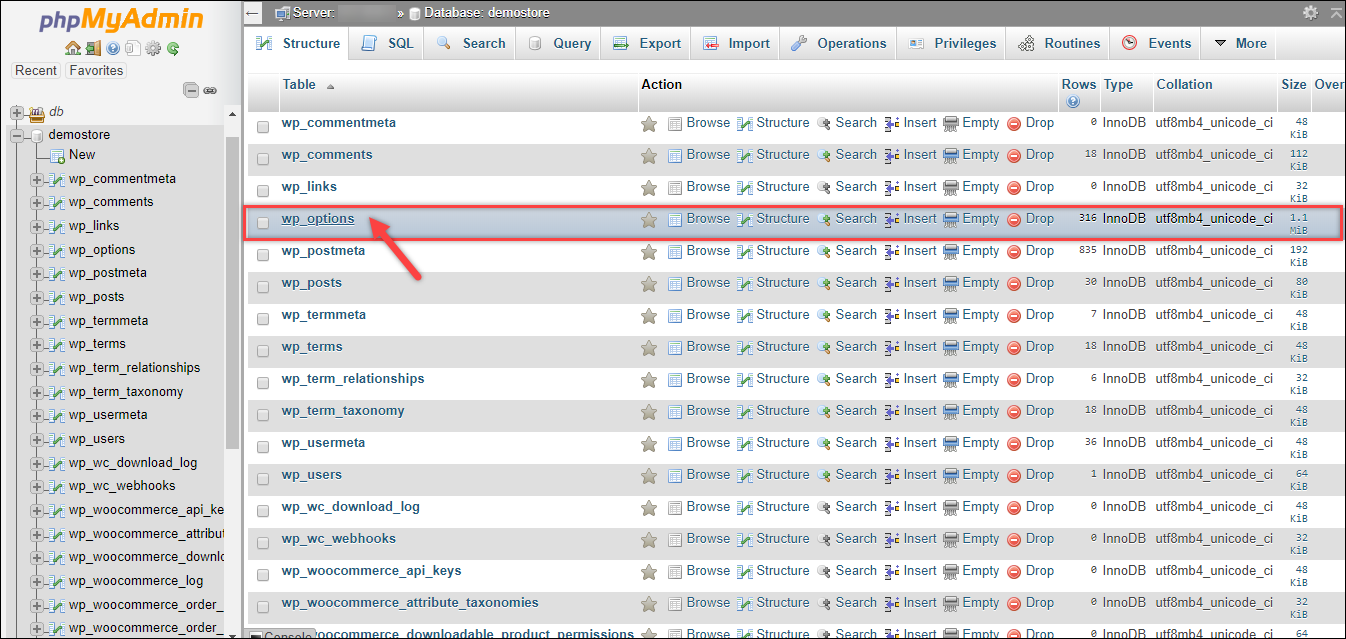

- Next, the rows of the wp_options table will be displayed. In the option_name column, find the active_plugins row. This row contains the information of the activated plugins on your WordPress site. Consequently, you could also enter the search query in the Filter rows text field.
Once you have the found the required row, click on the respective Edit option, as shown in the below screenshot.
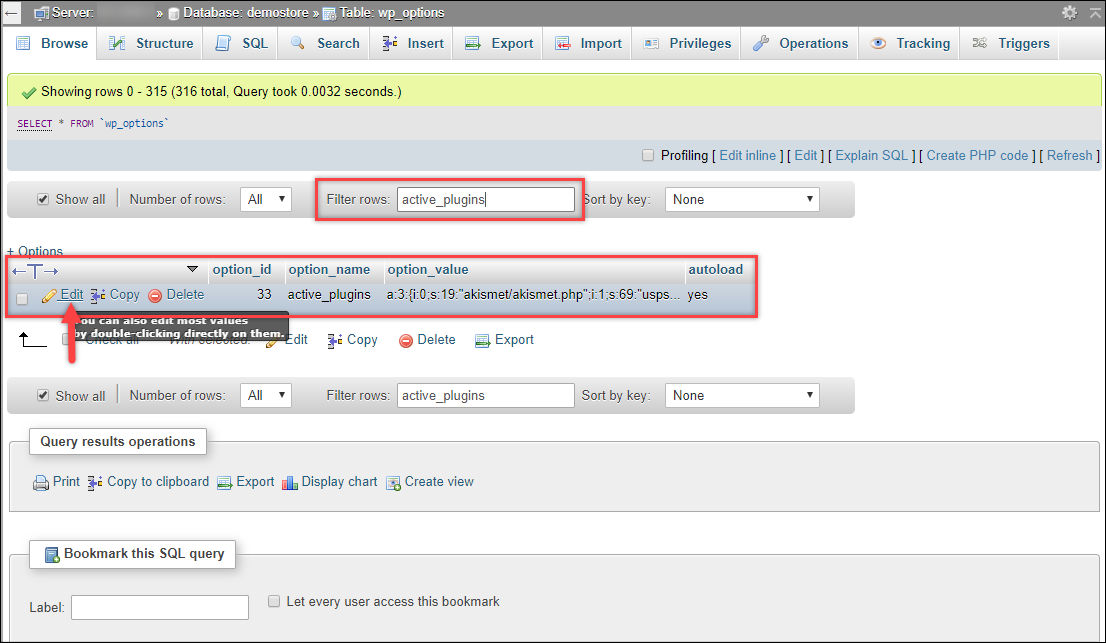

- You can notice the name of all the activated plugins on your site. Following screenshot shows the activated plugins on our demo site.
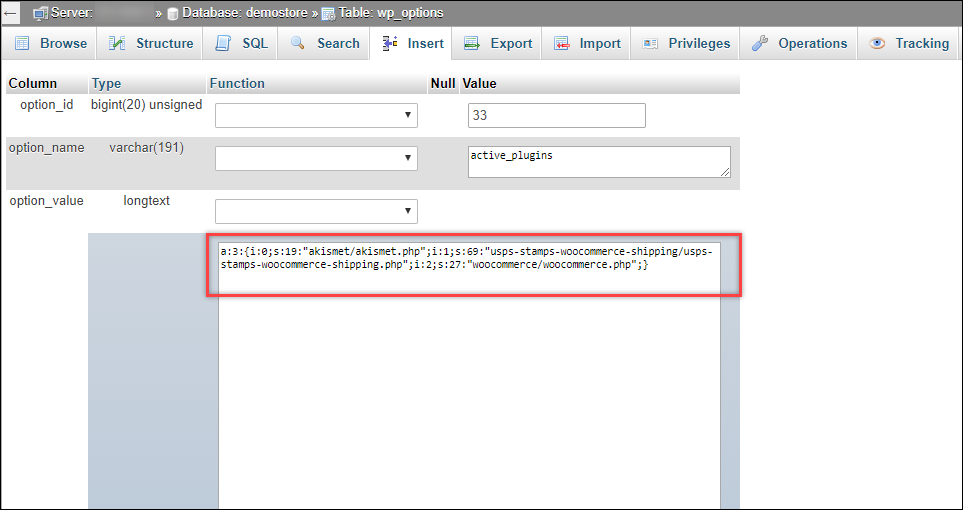

Replace the complete option_field value with a:0:{} and click on Go button to proceed, as shown in the screenshot below.


All the activated plugins will now be deactivated. You can try logging into your WordPress site. Next, you can try activating one plugin at a time to find the real culprit.
Tip: Once you have found the problematic plugin, check for an update. As I mentioned earlier in this article, it is always a good idea to keep an updated version of the plugin and check for compatibility as well. If the issue is still not resolved, contact the plugin developer for the fix
II) Delete the faulty plugin:
If you have found the faulty plugin, but are not able to access or deactivate it, you can consider deleting the plugin’s folder itself. This method is also suitable when you are not able to access your site.
There are two methods for deleting the folders from your site:
- Using FTP Client software
- Using ssh command in Git Bash console.
You can use FTP Client software like FileZilla or Cyberduck. Although these tools provide easy steps for deleting the folders, it is not a suitable method. A good practice is to delete the folders using Git Bash.
So how do you delete folders from your WordPress website?
- Download the latest the version of Git from the source website (refer its documentation for installation and configuration).
- Open Git Bash console. Enter port number, host address, and login credentials.
- Enter the following command to change path and navigate to the plugins folder of your WordPress site. For example, if your website name is example.com, then enter the following command(after the $ sign) –
$ cd /var/www/example.com/wp-contents/plugins
A sample demonstration is shown in the screenshot below.


- Next, enter the command $ ls (lowercase L and S) to list all the folders under the plugins folder. Notice the current location you are accessing, before the $ sign.
Refer the following screenshot.


The listed folders show all the plugins that are installed on our site, both activated and deactivated.
- For this demonstration, let us delete the Amazon payment gateway plugin, whose folder is titled as payments-gateway-amazon-woocommerce.
For this, enter the following command (after the $ sign) to delete the folder –
$ sudo rm -R payments-gateway-amazon-woocommerce/
If the folder is successfully deleted, there will not be any error messages, and you are shown the next command line. Next, enter $ ls command to view the current folders of the parent folder, plugins. You can notice the deleted folder will not be listed, as shown in the screenshot below.


III) Switch to WordPress default theme:
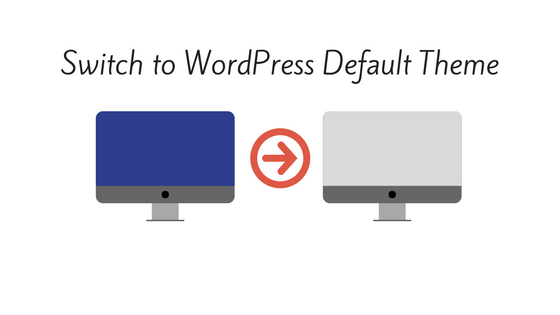

There could be chances that the faulty plugin may not be compatible with your current theme. You can try changing your website theme to the default one. You can change to the latter theme when the plugin developers fix the compatibility issue.
While the developers might fix the issue in the next version of the plugin and release it to you, there are some proficient developers who make an effort to make sure their plugin is compatible (or can be easily customized) with popular themes. Here’s one case.
So to be on the safer side, what are the preventive measures you can take?
- Take regular backups: Without a doubt, regular backups help you roll back to the last working condition. This would also make sure your data is safe. And a more efficient way is to switch to automatic backups. Read this article to know how to manage automatic WordPress backups.
- Use caching plugins: Caching plugins would store your web pages and blog posts as static files. It is much easier to load these static pages than create a new, dynamic HTML page every time. As a result, your server won’t be loaded with a lot of processing requests. Redundancy and load time on your WordPress site can be improved quite well this way. Here’s how you can improve your site performance with WordPress Caching plugin.
- Switch to better hosting service: The hosting service that you choose for your WordPress site has a major role to play in your site’s performance and traffic. Worse, if you are running a WooCommerce store, it will have a direct impact on your sales and customer experience. Hence you need to consider various factors for choosing a WordPress hosting.
All things considered, here’s our 10-point rule for the best WordPress Security Solutions.
Also read, common mistakes made by aspiring bloggers.











